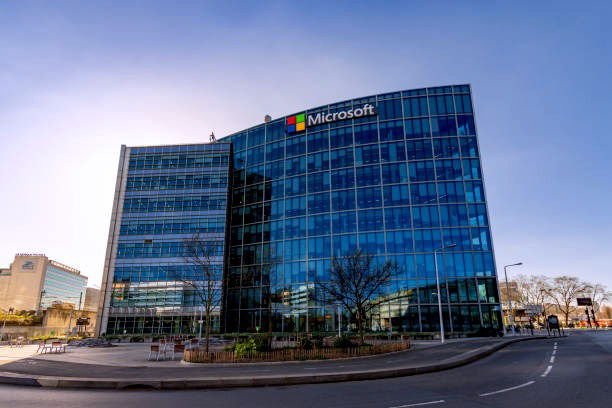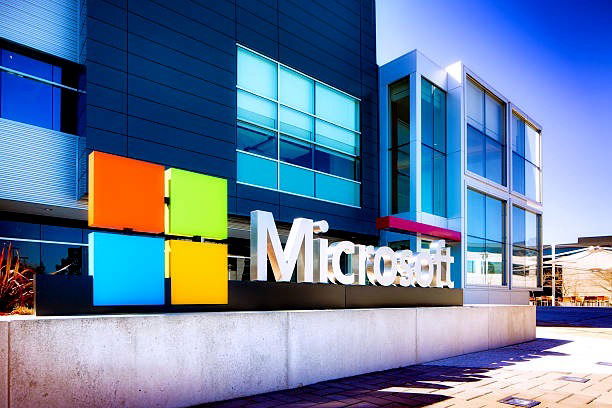Microsoft Corporation: Shaping the Future of Technology and Innovation
Introduction
Microsoft Corporation, headquartered in Redmond, Washington, is a global technology titan renowned for its software, cloud services, and hardware innovations. Founded in 1975 by Bill Gates and Paul Allen, Microsoft revolutionized personal computing with Windows and Microsoft Office, becoming a household name. Today, under CEO Satya Nadella, Microsoft leads in cloud computing, artificial intelligence (AI), and gaming, with a market capitalization often exceeding $3 trillion.
This blog explores Microsoft’s evolution, its transformative products, and its vision for a technology-driven future
The Early Days: Building the Software Empire
Microsoft’s story began with the creation of a BASIC interpreter for the Altair 8800, one of the first personal computers. This early success led to a partnership with IBM in 1981 to develop MS-DOS, an operating system that powered IBM’s first PCs. MS-DOS laid the foundation for Microsoft’s dominance in the PC market. In 1985, Microsoft launched Windows 1.0, introducing a graphical user interface (GUI) that made computing more accessible.
The release of Windows 3.0 in 1990 marked a turning point, with its improved interface and multitasking capabilities driving widespread adoption. Microsoft Office, introduced in 1989, bundled Word, Excel, and PowerPoint, becoming the standard for productivity software. By the 1990s, Microsoft’s Windows and Office products held near-monopoly status in the PC market, cementing its position as a software giant.
Bill Gates’ Legacy: Vision and Philanthropy
Bill Gates, Microsoft’s co-founder and long-time CEO, was instrumental in its early success. His vision of “a computer on every desk and in every home” drove Microsoft’s focus on user-friendly software. Gates’ competitive strategy, including strategic partnerships and aggressive marketing, outmaneuvered rivals like Netscape and Apple. However, Microsoft faced antitrust scrutiny in the late 1990s, culminating in a landmark U.S. lawsuit over its dominance in the PC market.
Gates stepped down as CEO in 2000, transitioning to a philanthropy-focused role through the Bill & Melinda Gates Foundation. His legacy at Microsoft includes not only its software dominance but also a culture of innovation that continues to influence the company’s direction.
Satya Nadella’s Transformation: Cloud and AI Leadership
Since taking over as CEO in 2014, Satya Nadella has redefined Microsoft’s trajectory. Nadella shifted the company’s focus from a Windows-centric model to a cloud-first, AI-driven strategy. Microsoft Azure, launched in 2010, has become a leading cloud platform, competing with Amazon Web Services (AWS) and Google Cloud. Azure’s infrastructure powers enterprises, governments, and startups, offering scalable computing, AI, and analytics services.
Nadella’s emphasis on AI is evident in products like Azure AI, Cortana, and Microsoft Cognitive Services, which enable developers to integrate AI into applications. The acquisition of LinkedIn in 2016 for $26.2 billion and GitHub in 2018 for $7.5 billion expanded Microsoft’s reach into professional networking and developer communities. Nadella’s inclusive leadership and focus on “empowering every person and organization” have revitalized Microsoft’s culture and market position.

Microsoft Corporation Head Office
Windows: The Backbone of Personal Computing
Windows remains Microsoft’s flagship product, powering over 1.4 billion devices worldwide. Windows 95, 98, and XP defined computing for generations, while Windows 10 and 11 introduced modern features like the Microsoft Store, Cortana, and enhanced security. Windows 11, launched in 2021, emphasizes productivity and hybrid work with a sleek interface and seamless integration with Microsoft 365.
Microsoft’s shift to a “Windows as a Service” model ensures continuous updates, enhancing user experience and security. Windows’ versatility, supporting everything from PCs to IoT devices, underscores its enduring relevance in a cloud-centric world.
Microsoft Office and Productivity
Microsoft Office, now part of Microsoft 365, is the world’s leading productivity suite. With cloud-based features, real-time collaboration, and AI-driven tools like Editor and Designer, Office remains indispensable for businesses and individuals. Microsoft Teams, integrated into Microsoft 365, became a lifeline during the COVID-19 pandemic, enabling remote work and virtual collaboration.
Microsoft’s focus on accessibility, such as voice typing and Immersive Reader, ensures Office meets diverse user needs. The subscription-based Microsoft 365 model generates recurring revenue, reinforcing Microsoft’s financial stability.
Cloud Computing: Azure’s Rise
Microsoft Azure is the cornerstone of the company’s cloud strategy, offering over 200 services, including virtual machines, AI, and blockchain. Azure’s hybrid cloud capabilities, which integrate on-premises infrastructure with cloud services, appeal to enterprises transitioning to digital environments. Partnerships with companies like SAP, Adobe, and Salesforce enhance Azure’s ecosystem.
Azure’s AI and machine learning tools, such as Azure Machine Learning and Databricks, empower businesses to analyze data and build intelligent applications. Azure’s growth has made Microsoft a leader in the cloud market, with cloud revenue surpassing $100 billion annually.
Gaming and Xbox: Entertainment Powerhouse
Microsoft’s gaming division, centered on Xbox, is a major player in entertainment. The Xbox console, launched in 2001, competes with Sony’s PlayStation and Nintendo’s Switch. Xbox Series X/S, released in 2020, offers cutting-edge performance and backward compatibility. Xbox Game Pass, a subscription service with over 25 million subscribers, provides access to hundreds of games, revolutionizing gaming economics.
The 2022 acquisition of Activision Blizzard for $68.7 billion, one of the largest in tech history, added iconic titles like *Call of Duty* and *World of Warcraft* to Microsoft’s portfolio. Xbox Cloud Gaming enables streaming on diverse devices, positioning Microsoft as a leader in cloud gaming.
Hardware: Surface and Beyond
Microsoft’s Surface line, launched in 2012, includes tablets, laptops, and all-in-one PCs designed to showcase Windows’ capabilities. Devices like the Surface Pro and Surface Laptop compete with Apple’s iPad and MacBook, blending productivity and portability. The Surface Studio, aimed at creatives, highlights Microsoft’s focus on premium hardware.
Microsoft’s HoloLens, a mixed-reality headset, targets enterprise applications like manufacturing and healthcare. While not a consumer hit, HoloLens demonstrates Microsoft’s commitment to emerging technologies like augmented reality (AR).
Innovation and AI: The Next Frontier
Microsoft’s AI investments span research, tools, and applications. The partnership with OpenAI, including a multi-billion-dollar investment, powers Azure’s AI capabilities and integrates ChatGPT-like technology into Bing and Microsoft 365. Microsoft’s AI Copilot, embedded in Office apps, enhances productivity with real-time suggestions.
Microsoft’s quantum computing efforts, through Azure Quantum, aim to solve complex problems in chemistry and cryptography. Initiatives like AI for Good apply AI to societal challenges, such as climate change and healthcare, aligning with Microsoft’s mission to drive positive impact.
Sustainability and Corporate Responsibility
Microsoft is committed to sustainability, pledging to be carbon negative by 2030. The company invests in renewable energy, water conservation, and circular manufacturing. Azure’s energy-efficient data centers and Microsoft’s carbon removal contracts reflect its environmental focus. Programs like the Planetary Computer use AI to monitor ecosystems, aiding conservation efforts.
Microsoft’s diversity and inclusion initiatives promote equitable workplaces, while its global skills programs aim to train millions in digital literacy. These efforts enhance Microsoft’s reputation as a socially responsible tech leader.

Challenges and Criticisms
Microsoft faces challenges, including regulatory scrutiny over its market dominance and acquisitions. The Activision Blizzard deal raised concerns about gaming industry consolidation, prompting reviews by global regulators. Cybersecurity threats, such as high-profile hacks targeting Microsoft Exchange Server, highlight the need for robust security measures.
Competition in cloud and AI from AWS, Google, and emerging players like Snowflake tests Microsoft’s innovation. Additionally, transitioning legacy customers to cloud-based solutions requires significant investment and support.
Microsoft’s Ecosystem and Partnerships
Microsoft’s ecosystem integrates software, cloud, and hardware, creating a seamless experience for users. Azure’s open-source support and compatibility with Linux attract developers, while Microsoft 365’s integration with Teams and Dynamics 365 drives enterprise adoption. Strategic partnerships with companies like Walmart and AT&T amplify Microsoft’s reach.
The Microsoft Partner Network, with over 400,000 partners, fosters innovation and global distribution. Acquisitions like Nuance Communications and ZeniMax Media expand Microsoft’s capabilities in healthcare and gaming, strengthening its competitive edge.
Cultural and Market Impact
Microsoft’s influence extends beyond technology. Windows and Office have shaped how billions work and learn, while Xbox defines modern gaming culture. Microsoft’s branding, emphasizing empowerment and innovation, resonates through campaigns like “Be What’s Next.” Its retail stores and online communities foster customer engagement.
Microsoft’s stock (MSFT) is a Wall Street staple, reflecting investor confidence in its diversified portfolio. The company’s philanthropy, led by Gates and continued under Nadella, addresses global health, education, and poverty, enhancing its societal impact.
The Future of Microsoft
Microsoft is poised to lead in AI, cloud, and emerging technologies. Its investments in the metaverse, through Mesh for Teams and HoloLens, position it for virtual collaboration and immersive experiences. Quantum computing and 5G integration via Azure promise to unlock new possibilities.
Microsoft’s focus on ethical AI and regulatory compliance will shape its role in a rapidly evolving tech landscape. By balancing innovation with responsibility, Microsoft aims to empower individuals and organizations while addressing global challenges.
Conclusion
From a software startup to a global tech leader, Microsoft Corporation’s journey reflects innovation, resilience, and adaptability. Its products—Windows, Office, Azure, and Xbox—have transformed industries and enriched lives. Under Satya Nadella’s leadership, Microsoft’s cloud and AI focus ensures its relevance in a digital age. Despite challenges, Microsoft’s robust ecosystem, strategic acquisitions, and commitment to sustainability position it to shape the future. As technology evolves, Microsoft remains dedicated to empowering every person and organization to achieve more.
Published: April 26, 2025
© 2025 Tech Insights Blog. All rights reserved.